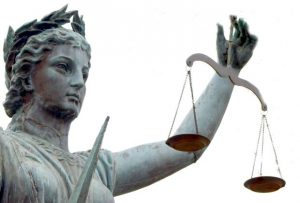Over the last several decades, the American criminal justice system has relied increasingly on forensic testing to definitively identify suspects, nail down timelines and prove or disprove theories about what happened and who was involved. 
However, there is an increasing amount of data showing that some of these methods are not as bullet-proof as they were previously held out by prosecutors and the scientific community to be. In 2015, Pulitzer Prize-winning investigative journalists at ProPublica detailed the great deal of faulty forensics that had been reported in previous years.
On one hand, the emergence of DNA analysis became a powerful prosectuorial tool – but also one that was valuable for defendants, resulting in the revelation of scores of wrongful convictions. Recently, the Washington Post reported on a substantial study by the National Association for Criminal Defense Lawyers that found 26 out of 28 examiners in the FBI’s forensic hair comparison unit gave flawed testimony in more than 200 criminal cases during the 1980s and 1990s.
In each of these instances, FBI forensic hair analysts overstated the accuracy of their analysis in ways that helped prosecutors – and harmed defendants, marring their opportunity for a fair trial. This has proven the case in 95 percent of the 268 trials reviewed so far. As our Fort Lauderdale criminal defense lawyers understand it, 32 of those cases involve defendants who were ultimately sentenced to death. Of those, 14 have either died in prison or were executed.
The study was conducted in conjunction with the Innocence Project and with assistance from the U.S. Justice Department.
This development is merely the most recently to strike the public faith in a science police and prosecutors have for years been telling us all is airtight scientific proof.
The National Academy of Sciences in 2009 conducted an exhaustive review of the entirety of forensic sciences. What they noted was that despite claims that forensic science – and DNA analysis in particular – is error-proof, the reality is there is a lack of information and peer-reviewed study on many of these fronts. That means test results that held up to be accurate to practically indisputable odds may not in fact be so solid.
As the Washington Post reported, the FBI and the U.S. Justice Department actually admitted finally that nearly every examiner in its elite forensic unit gave testimony that was not entirely accurate in almost all trials where they were providing expert witness testimony.
It should be noted that the errors in the DNA evidence doesn’t necessarily mean the courts will overturn all these convictions. In a number of cases, the evidence against the defendant may have been substantial, even without the DNA evidence. However, we know even before this study came out, four of the defendants were later exonerated.
But the fact that these misrepresentation of forensic science was happening at the highest levels of government involving top-trained scientists is deeply disturbing. The question now will be how state courts and authorities work to keep what may be faulty or bogus science from juries. Hair analysis and bite mark analysis in particular contributed to wrongful convictions in some 330 cases since 1989.
Call Fort Lauderdale Criminal Defense Attorney Richard Ansara at (954) 761-4011. Serving Broward, Miami-Dade and Palm Beach counties.
Additional Resources:
Another Startling Verdict for Forensic Science, April 14, 2017, By Ryan Gabrielson, ProPublica
More Blog Entries:
 Fort Lauderdale Criminal Attorney Blog
Fort Lauderdale Criminal Attorney Blog


